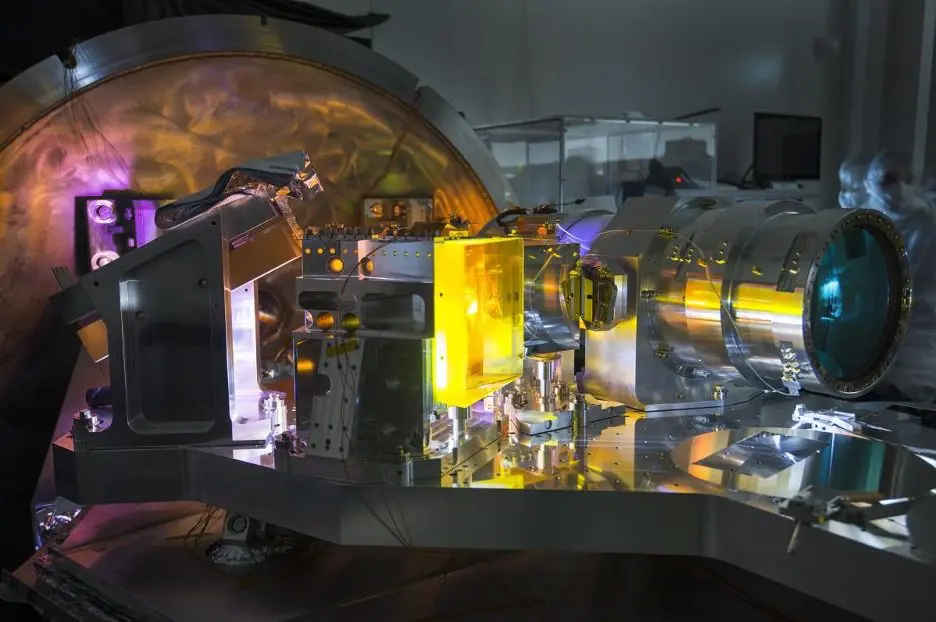SPIRou


Technical Specifications |
|
|---|---|
| Instrument Name | SpectroPolarimètre InfraRouge |
| Acronym | SPIRou |
| First Light | April 2018 |
| Wavelength Range | 0.98 - 2.35 microns (infrared) |
| Instrument Type | Spectropolarimeter |
| Status | Operational at the Canada-France-Hawaii Telescope |
The SPIRou (SpectroPolarimètre InfraRouge) astronomical instrument was designed to unravel the mysteries of distant alien worlds with unprecedented precision. Developed through a collaborative effort by several research institutions, SPIRou serves as a versatile tool for studying exoplanets and a range of stellar phenomena in the infrared spectrum (specifically within the 0.98 to 2.35 micron wavelength range).
At its core, SPIRou is a spectrograph and polarimeter that operates in the near-infrared wavelength range. Housed within the Canada-France-Hawaii Telescope (CFHT) on Maunakea, Hawai’i, SPIRou is equipped with highly sensitive detectors and advanced optical components. It boasts the remarkable ability to simultaneously measure the spectrum and polarisation of light from stars, planets, and other astronomical objects, enabling scientists to extract invaluable information about their composition, atmospheric properties, and magnetic fields.
SPIRou’s main science objectives include the detection and characterization of exoplanets, particularly Earth-like rocky planets orbiting red dwarf stars. The instrument’s high precision and sensitivity allow it to detect the tiny gravitational wobbles induced by orbiting planets on their host stars. To successfully detect an Earth-like planet around a low-mass star, SPIRou must reach an accuracy of 1 m/s. This technique, known as the radial velocity method, helps astronomers identify and study exoplanets, contributing to our understanding of their atmospheres, sizes, and orbits.
Moreover, SPIRou can provide insights into the magnetic activity of these stars and the processes occurring within their stellar interiors. By studying the polarisation of starlight, the instrument helps researchers map magnetic fields on the surfaces of stars and delve into their internal dynamics, shedding light on stellar evolution and behaviour.
SPIRou’s remarkable capabilities extend to investigating the origins of magnetic fields, the formation pathways for massive stars, and various other astrophysical processes. Its unique combination of spectroscopy and polarimetry opens up new avenues of exploration in the infrared domain, which is crucial for studying objects hidden by dust clouds and for understanding the early Universe.